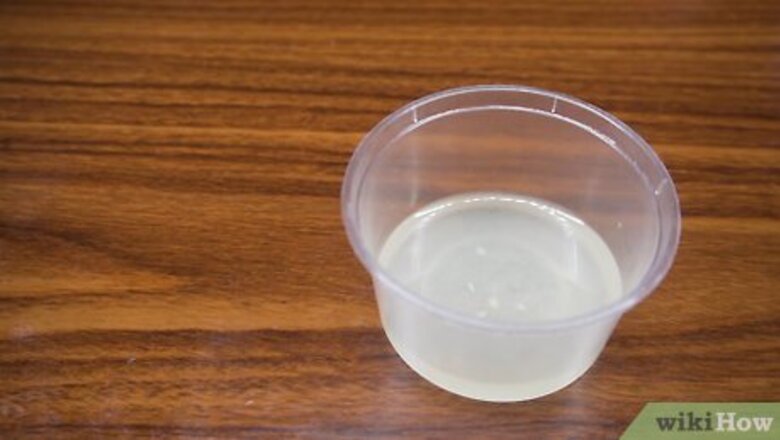
views
Using Vinegar Substitutes
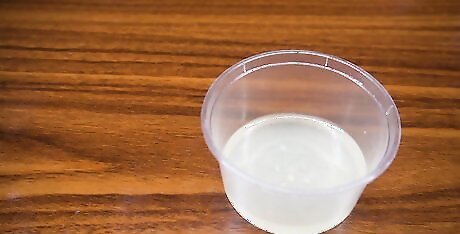
Replace the vinegar with an equal amount of lemon or lime juice. The acid in vinegar creates a chemical reaction that helps the food coloring to bond with the eggshell. Lemon or lime juice will also provide enough acid to cause this reaction. You can use lemon or lime juice as a 1 to 1 replacement for vinegar in egg dye recipes. For example, if the recipe calls for 1 teaspoon (4.9 mL) of vinegar, use 1 teaspoon (4.9 mL) of lemon or lime juice. You can use fresh or bottled lemon or lime juice. Both will work the same way.
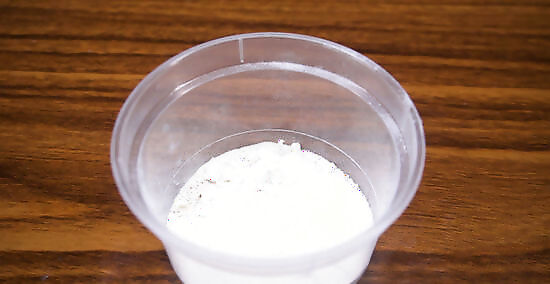
Try using 1 teaspoon (4.9 mL) of vitamin C powder instead of vinegar. If you don’t have any lemon or lime juice on hand, check your vitamin stash for vitamin C powder. Use 1 teaspoon (4.9 mL) of vitamin C powder in place of 1 teaspoon (4.9 mL) of vinegar in your dye recipe. If you don’t have vitamin C powder, you can also use a vitamin C tablet. Crush it into a powder using the back of a spoon and add that to your dye mixture.

Use water and dye if you’re making pastel-colored eggs. If you don’t have any lemons, limes, vitamin C powder, or vitamin C tablets, then you can use water and your other dye ingredients to color the eggs. They will be lighter in color than they would be with vinegar or a vinegar substitute, but they will still retain some color. For example, if the recipe says to add 4 fluid ounces (120 mL) of water to a cup with 6 drops of food coloring and 1 teaspoon (4.9 mL) of vinegar, just leave out the vinegar.
Boiling Eggs with Natural Dye Ingredients

Choose colorful edible items to dye your eggs. Boiling eggs in chopped fruits or veggies may be enough to get the color to stick. If you do not have a vinegar substitute or dye, you can use an edible dye. Some good options for dyeing 10 to 12 eggs include: 1/2 a head of chopped red cabbage (blue) 2 or 3 chopped carrots (yellow) 1 or 2 chopped beets (pink) 32 fluid ounces (950 mL) of cranberry juice (pink) 32 fluid ounces (950 mL) of coffee (brown or tan) 1 12 oz (340 g) package of fresh spinach leaves (green) 32 fluid ounces (950 mL) of red wine or grape juice (dark purple) 2 or 3 yellow onion skins (orange) 2 tablespoons of turmeric (bright yellow)

Cover your eggs and dye materials with water if you’re using dry ingredients. First, put your eggs and dye materials in a large pot. Then, pour in enough water to cover the eggs and dye components. The amount will depend on the number of eggs you are dyeing and the volume of your dye materials. For example, if you will be dyeing eggs with 2 tablespoons of turmeric, then you will probably need about 32 fluid ounces (950 mL) of water.
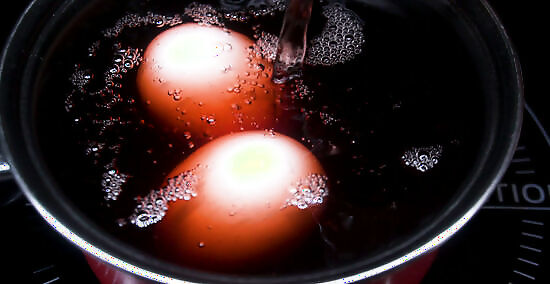
Cover your eggs in a pot with a liquid if you're not using dry ingredients. If you are using liquid to dye your eggs, pour enough of it over your eggs to cover them. You will need about 32 fluid ounces (950 mL) of liquid to cover a pot of 10 to 12 eggs. Make sure to purchase or prepare a large enough amount of the liquid to cover the eggs. For example, if you are going to be boiling your eggs in coffee, brew an entire pot and then pour enough over them to cover them.
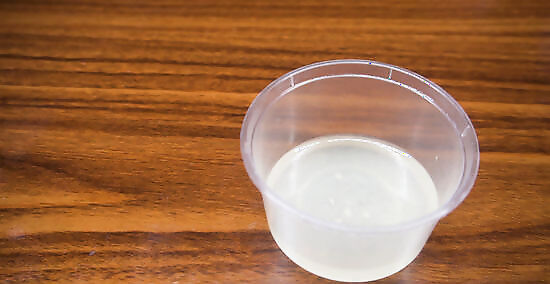
Include a vinegar substitute if you have it. Adding a vinegar substitute will help to ensure that more of the dye sticks to your eggshells. Use 1 teaspoon (4.9 mL) of lemon or lime juice in place of 1 teaspoon (4.9 mL) of vinegar, or use 1 teaspoon (4.9 mL) of vitamin C powder instead of 1 teaspoon (4.9 mL) of vinegar. Boiling the eggs in the dye will also help to make the color stick. If you are using wine to color the eggs, then you will not need to add anything else. The acidity of the wine will be enough to dye the eggs without vinegar or a vinegar replacement.
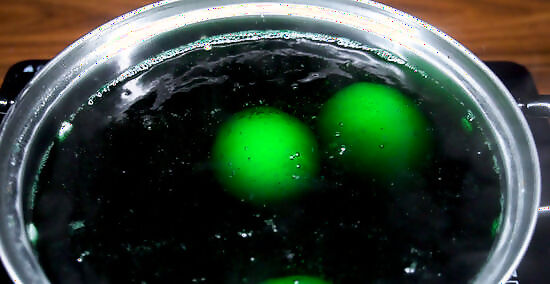
Boil the eggs for 7 minutes. Turn the heat up to medium-high and place the pot on the burner. Bring the water to a boil, and then turn it down to low-medium. Let the eggs simmer in the dye mixture for 7 minutes. If desired, you can test 1 of the eggs to make sure it is done. Use metal tongs to remove it from the pot, and then use a metal spoon to crack it. Cut down the center of the egg and inspect the yolk. It should be firm if the egg is cooked.

Let the eggs cool in the pot for about 2 hours. After the eggs have finished cooking, switch off the burner and leave the eggs alone. They can cool in the pot at room temperature for up to 2 hours. This will help to make the color stick to the shells even better. If you want to keep the eggs in the dye overnight, put the pot into your refrigerator after they have cooled to room temperature. You will get darker, more vibrant colors if you leave the eggs to sit in the dye overnight.




















Comments
0 comment